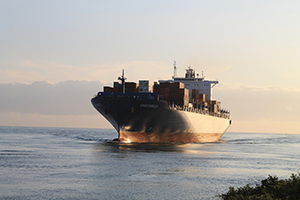The journey from tree to power station can be treacherous for the humble wood pellet, but there is a lot riding on the successful delivery of this biomass fuel to power stations across the world.
The cornerstone of the journey of these wood pellets are the ports that import this valuable cargo to be delivered to power stations across the UK. So, what would happen if these ports were to lose mains power supply? That’s exactly what happened to a port in the North of England, causing a shortage of biomass fuel for neighbouring power stations.
From forest to fuel
The delivery of fuel has one of the biggest effects on businesses and society. The journey begins in vast working forests in the US, where huge masses of wood pellets are loaded onto container ships for a transatlantic journey. When the ships pull into ports in the UK, these wood pellets are removed from the ship’s hold and transported onto conveyor belts, before being loaded onto a train.
From here, the trains carry large loads of pellets to the designated power stations across the country. Once at the final destination, conveyor belts carry these wood pellets from rail storage domes and into the furnace. The pellets are then combusted, which boils water to create steam that turns a generator, and hey presto, we have power.
Investment opportunity
Power stations rely on this seamless transportation process to operate, so it makes sense for a power station to invest in this delivery and distribution infrastructure. Several power stations have done just that, including a large 2017 civil engineering project, which saw a total of £300 million invested into the infrastructure of a well know port in the North-East of England.
With ambitions for improved energy security, environmental sustainability and an increase in jobs, it could be argued that it is crucial that the infrastructure of ports, an essential part of the energy supply chain, is reinforced.
Most facilities will have some sort of UPS system in place, a backup power system that uses charged up batteries. However, the duration of autonomous power supply will vary depending on the UPS product.
As part of a larger infrastructure investment, CP Automation recently installed a Riello 3/1 phase UPS system at 40 kVa at one bustling UK port to improve the duration of its power supply. But first, the company needed to determine the correct UPS system for its site.
Before implementing a new UPS system, the installer needs to determine whether the customer needs a single- or 3-phase UPS. This requires examining the loads the UPS will protect and assessing voltage range or kVa value. Generally, loads of 20kVA or less can safely use a single-phase UPS, whereas larger loads will likely need a 3-phase UPS.
For port conveyor applications like this one, a 3-phase UPS is usually required. The next consideration is whether to use a 3/1 or 3/3 configuration. A 3/1 UPS takes in 3-phase power and outputs a single phase, while a 3/3 takes in 3-phase power and delivers 3-phase to the downstream loads.
In 3 phase systems, the power circuit combines three alternating currents that vary in phase by 120 degrees. As a result, the power would never drop to zero, making it possible to carry more load, delivering more pellets to the power plant, more quickly.
Most businesses choose a 3/3 phase UPS, but for an application used to keeping critical equipment in a port up and running, it could be argued that a longer UPS duration is needed.
With this in mind, CP Automation installed a Riello 3/1 phase UPS system at 40 kVa to improve the ports power supply, complete with 80 rechargeable batteries. This provided the port with 1.5 hours of power autonomy during a power outage, much longer than it would have been if a 3/3 UPS alternative has been chosen.
The batteries are charged by the rectifier; so that if mains power fails, the UPS uses this energy source to power the inverter. This means the associated power stations waiting on fuel supplies do not feel the effects of unplanned power outages at the port.
With this type of investment, whether by the port itself, or the associated power stations, the power station should see a rapid return on investment (ROI) generated by decreased downtime and reduced delivery hold ups.







